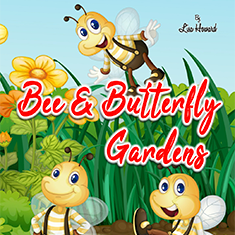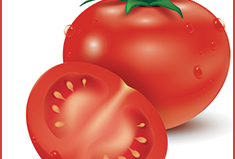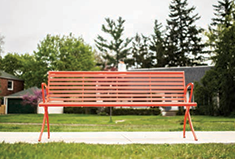Bee & Butterfly Gardens
By Lisa Howard
THREE-QUARTERS OF ALL FLOWERING PLANTS AND OVER ONE-THIRD OF THE WORLD’S FOOD CROPS have one thing in common: they depend on pollinators to reproduce: Bees, butterflies, moths, wasps, beetles, flies, even birds and bats.
Monocropping, pesticide use, shrinking habitats and other modern-day agricultural/urban trends have imperiled pollinators, but the good news is that we can help them receive beautiful flowers and tasty crops in return.
 “Don’t clean your garden too early in the spring,” Dominic Scappaticci advises. He’s the president of The Ferndale Garden Club (Facebook.com/theferndalegardenclub) and has long been a friend of bees and butterflies. “It’s best to wait until temperatures average in the 50s. A lot of pollinators like butterflies spend their entire lifecycles here in Michigan, and the next generation is asleep and hiding out in the leaf litter in your garden, in the old stems of plants and underneath the bark scattered around your yard. If you remove all of that debris too early, you’re throwing away the next generation of butterflies.”
“Don’t clean your garden too early in the spring,” Dominic Scappaticci advises. He’s the president of The Ferndale Garden Club (Facebook.com/theferndalegardenclub) and has long been a friend of bees and butterflies. “It’s best to wait until temperatures average in the 50s. A lot of pollinators like butterflies spend their entire lifecycles here in Michigan, and the next generation is asleep and hiding out in the leaf litter in your garden, in the old stems of plants and underneath the bark scattered around your yard. If you remove all of that debris too early, you’re throwing away the next generation of butterflies.”
And because many native bumblebees nest in the ground, it’s also important to have some patches of bare earth in the garden — then the bees can build their nests in those mulch-free spots and the queen can hibernate over the winter.
Of course, bees love flowers, particularly clover, goldenrod, blue lobelia and yellow giant hyssop, among others. Flowering herbs also attract plenty of buzz, although you might want to keep your basil flowers at a minimum since the leaves acquire a somewhat harsh flavor when you let the plant fully bloom.
 Including mostly perennials in your garden and landscaping is another way to help pollinators and the entire food chain since perennials are multiseason plants that offer food and shelter throughout the year. Take the service-berry (a.k.a. shadbush, juneberry and saskatoon berry) that Dominic loves to recommend: Its white flowers bloom in early spring and feed earlywaking pollinators. Then it gets small, bluish berries in June that birds love, and then its leaves turn pretty colors in fall. You can prune it like a small tree or allow it grow like a shrub and – to top it off – you too can eat its berries!
Including mostly perennials in your garden and landscaping is another way to help pollinators and the entire food chain since perennials are multiseason plants that offer food and shelter throughout the year. Take the service-berry (a.k.a. shadbush, juneberry and saskatoon berry) that Dominic loves to recommend: Its white flowers bloom in early spring and feed earlywaking pollinators. Then it gets small, bluish berries in June that birds love, and then its leaves turn pretty colors in fall. You can prune it like a small tree or allow it grow like a shrub and – to top it off – you too can eat its berries!
 To help butterflies, let wild violets flourish and plant dill, parsley and fennel, all of which Dominic calls “caterpillar magnets.” He points out that while it’s great to plant flowers that adult butterflies will feast upon, their babies — the caterpillars — also need food. “If you don’t have anything in your yard to feed caterpillars, then eventually you won’t see any butterflies,” he says. “You can balance that out by having host plants for caterpillars and also a variety of flowers, shrubs and trees. Native oaks are especially wonderful food sources for many different types of butterfly larvae.”
To help butterflies, let wild violets flourish and plant dill, parsley and fennel, all of which Dominic calls “caterpillar magnets.” He points out that while it’s great to plant flowers that adult butterflies will feast upon, their babies — the caterpillars — also need food. “If you don’t have anything in your yard to feed caterpillars, then eventually you won’t see any butterflies,” he says. “You can balance that out by having host plants for caterpillars and also a variety of flowers, shrubs and trees. Native oaks are especially wonderful food sources for many different types of butterfly larvae.”
To amp up your gardening savvy, pick up a copy of Doug Tallamy’s Bringing Nature Home, a book Dominic heartily recommends. Or follow the Ferndale Garden Club and join in the fun! Everyone is welcome and encouraged to share their love of gardening.



